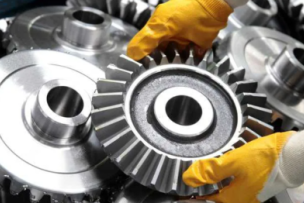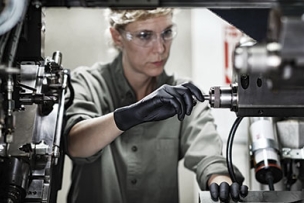MCR Safety has over forty years of experience as a leader in the field of personal protective equipment (PPE). Our assortment of offerings includes gloves, glasses, and garments which are made from the highest quality materials available to ensure maximum safety, comfort, and style.
MCR Safety began manufacturing rain gear during the 1980s under the company name of River City. Founded in 1983, River City merged with two other companies, Memphis Gloves and Crews Glasses, to create MCR Safety in 2004.
They're set apart from their competitors by having one of the broadest rain gear lines in the industrial market. They cater to wearers seeking high-end designs, mid-tier options, and competitively priced styles. In contrast, most industrial personal protective equipment (PPE) companies only stock one or two tiers, and MCR Safety stocks all three! Their product line ranges from styles designed for chemical resistance to those offering warmth to high-visibility options. You'll find rain gear offered as single-use ponchos, high-end breathable jackets, and stretchable options that let you move freely so you can still get the job done. Most importantly, their rain gear is designed to keep you dry, allowing you to stay comfortable and protected in the elements.
Nobody enjoys becoming drenched by rain, especially when it's cold outside. This article highlights the different coatings available on MCR's rainwear and then jumps directly into the specific raingear categories. Read on to learn more and let's get you out of the rain, or at least protected from it.
Commercial, Industrial, Safety, and Sports
MCR Safety caters primarily to those needing work rain gear; however, their products are also worn across many facets of everyday life. Rain gear is a type of protection everyone needs, whether you're headed out into nature camping, adventuring on the boat, or riding a motorcycle. Here are some more leisure activities people may need rain gear for:
- ATV Riding
- Backpacking
- Biking
- Cycling
- Golf
- Fishing
- Hiking
- Hunting
- Running
In commercial and industrial work settings, anyone riding to work in the rain always needs protection. In addition, rain gear is often used by those employed in agriculture, airports, carpenters, commercial fishing, construction, EMS, forestry, food processing, logging, long-haul driving, mining, oil and gas, police, sailors, theme parks, and utilities. Rain gear for tree work is one area that relies heavily upon work rain gear, as it always involves unpredictable weather. Essentially, safety work rain gear is worn across numerous industries and occupations. And, those in southern states must always have their rain gear nearby.








Talk to Us!
Leave a reply
Your email address will not be published. Required fields are marked *